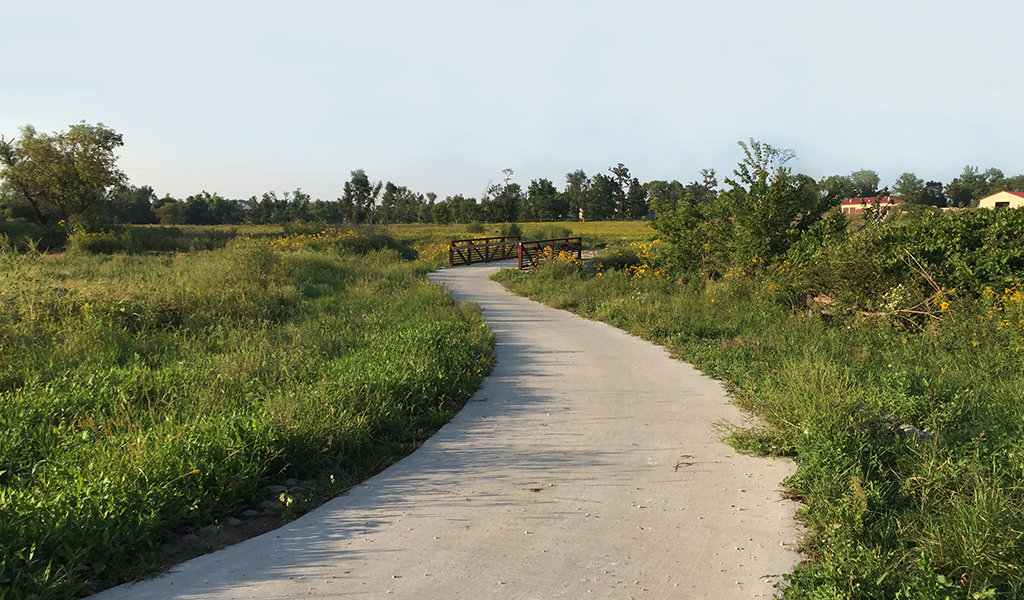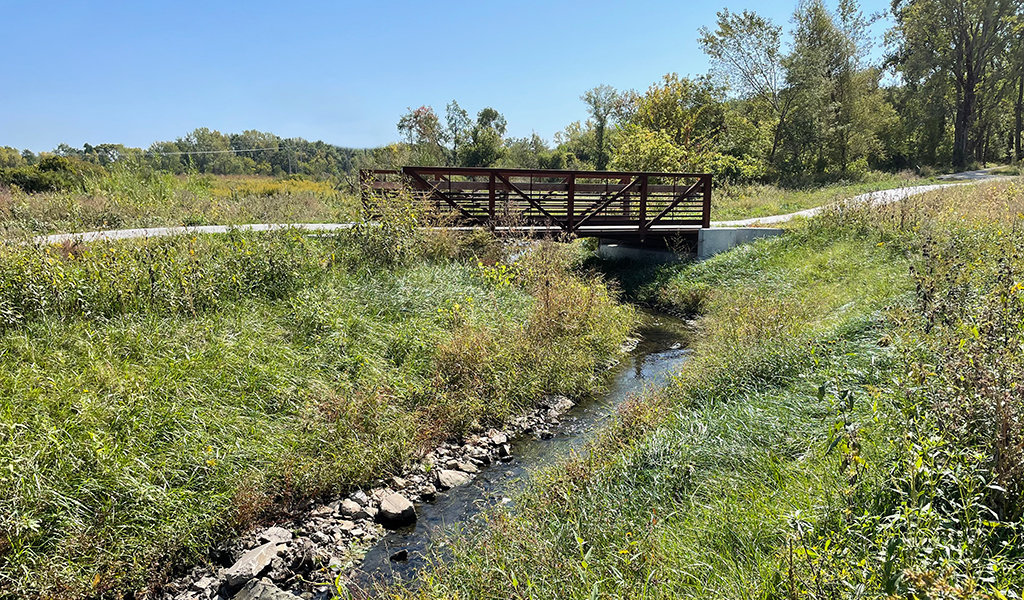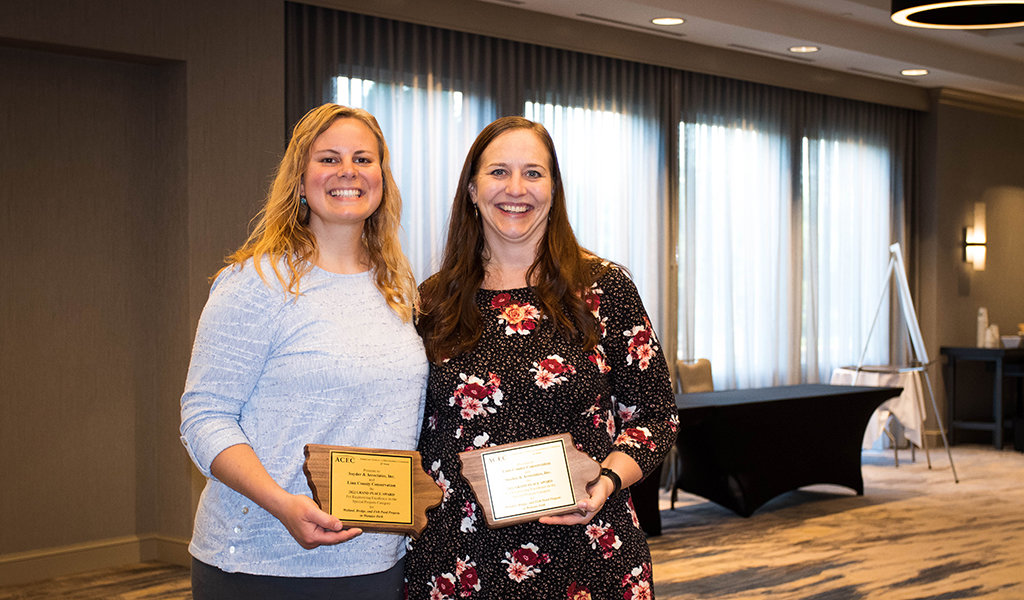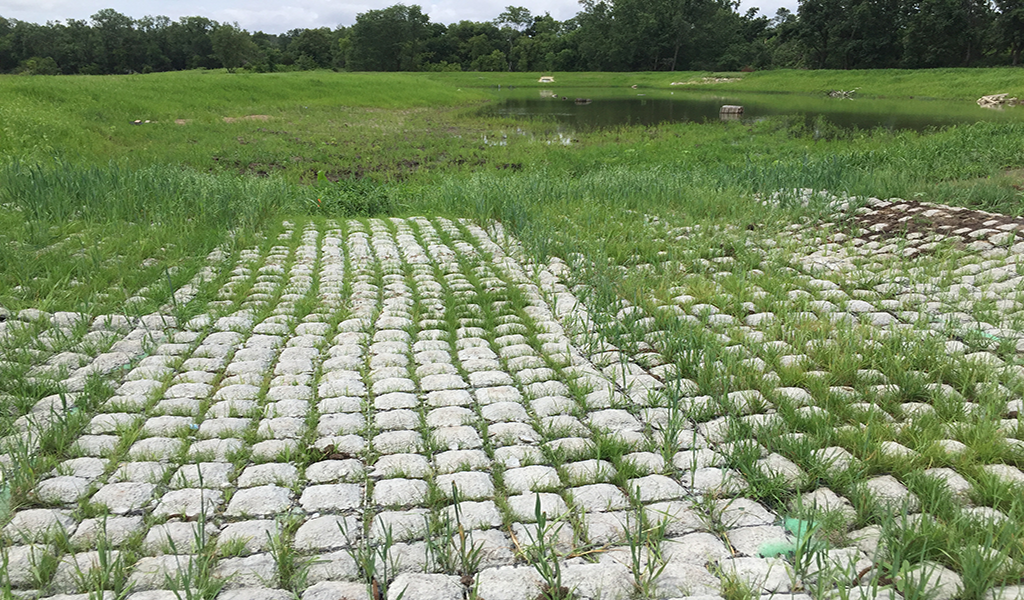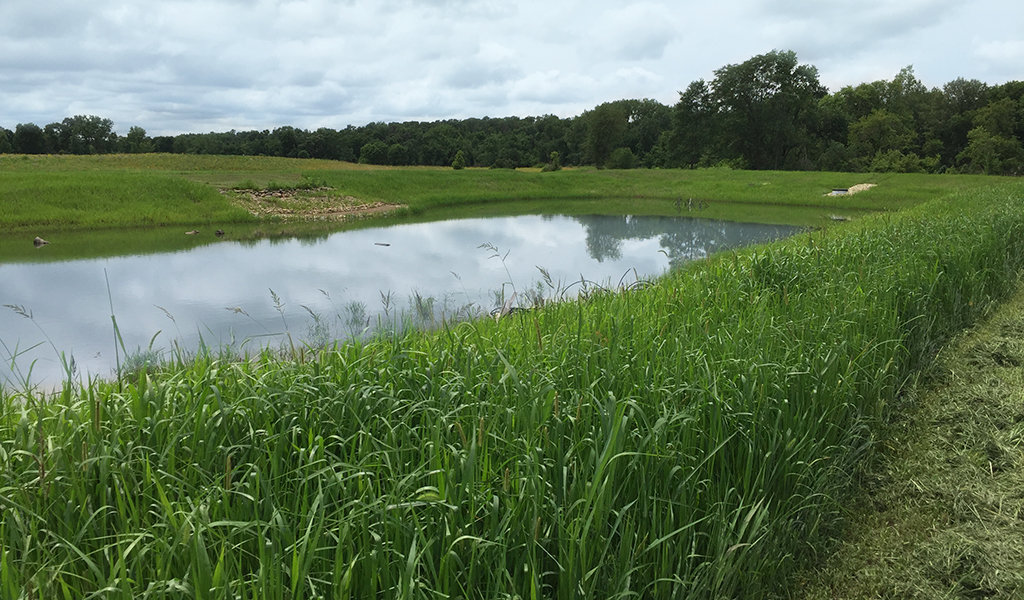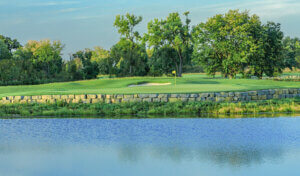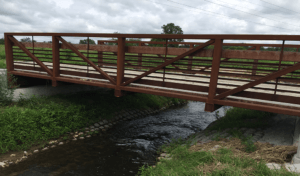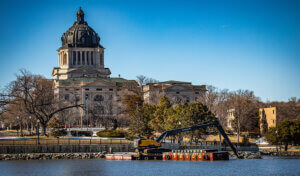
Funding Measures Support Preservation Initiatives
In November 2016, Linn County Iowa residents passed the Water and Land Legacy bond issue with a 74 percent approval. This popular concept demonstrated that county residents overwhelmingly supported water quality, floodplain storage, and the preservation of natural areas. With the funding mechanism secured and a focus backed by community approval, Linn County officials partnered with the engineers and environmental scientists with Snyder & Associates to design and construct a series of water quality projects in Wanatee Park.
Beyond Wetlands, Creating New Amenities in Wanatee Park
During the initial design stages, community leaders had the sole intention of creating new wetlands within the park. While conducting site inspections, our environmental team noticed a few additional improvements that would significantly benefit park amenities while also enhancing water quality within the local watershed. Through discussions with Linn County Conservation officials, a new trail bridge and fishpond were approved in addition to the planned wetlands.
Wetland Creation & Enhancements Lead Design Efforts
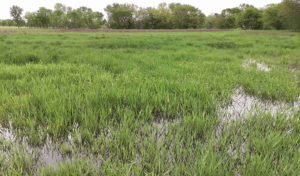
In total, seven wetlands were constructed or rehabilitated to increase the park’s sustainability and improve the area’s water quality.
Our project team focused on the wetlands portion of the project first. County officials already had specific areas in mind for potential wetland enhancement and creation. Throughout these assessments, our team vetted the options, affirming their selections and providing new suggestions, as well. In total, seven sites were chosen for wetland improvements, with a net cut of 2,280 cubic yards achieved.
Though all wetland sites required updates, there was a varying degree of work needed across the seven locations. Some of the wetlands were enhancement projects where the area had once been deeper but had filled in with sediment over time. For these areas, the focus was excavating sediment and restoring hydrology to improve wetland functions and provide an environmental lift.
Other wetlands were created from scratch based on the location of drainage features and tiles. Agricultural tiling systems previously conveyed water from nearby fields into Wanatee Creek. A few of the newly constructed wetlands allowed tiles to flow openly within the wetlands, supplying hydrology and creating ideal wetland habitats. This was a great way to improve water quality as tiles that had previously outlet nutrients directly into the creek now drain into the wetlands and the nutrients are absorbed by plants rather than flowing downstream. Several of these constructed wetlands included an Agri Drain Water Level Control Structure™ in the designs. These structures allow Linn County Conservation staff to draw down wetland water levels if necessary, for seeding or vegetation maintenance, such as treating invasive species.
Consistent with the Water and Land Legacy bond’s initial goal, these wetlands filter nutrients and provide floodplain storage benefits necessary to improve local water quality while enhancing wildlife habitat and the natural beauty of the surrounding landscape.
Pedestrian Trail Bridge Replaces High-Maintenance Culverts
The next phase of this project focused on the construction of a 30-foot-long prefabricated steel truss pedestrian and maintenance bridge over Wanatee Creek. This bridge was designed to replace deteriorated twin Corrugated Metal Pipe (CMP) culverts that were past their useful life. The culverts were covered by a soil and mulch mixture that would constantly be washed out and require replacement due to the low trail profile and the crossing’s location in the Federal Emergency Management Agency (FEMA) regulatory floodway.
A more permanent structure at a higher elevation was necessary. Our team consulted with our structural subsidiary, Shuck Britson, to identify design solutions. It was determined that using a prefabricated structure with site-specific dimensions would be the best fit as these are well suited for similar span lengths and trail bridge loading. Because this is a fairly simple design that requires no formwork or falsework, this option ended up being the most economical solution for the client, as well. The bridge was assembled off-site by the manufacturer and shipped to the park for placement. A crane was used to lift the approximately 20,000-pound bridge off the truck and position it on the newly designed and constructed abutments.
Since this crossing is also the main access point for county maintenance vehicles, special consideration was taken during its design. To accommodate vehicle access across the bridge, the connecting trail had to be built at a different slope than the pre-existing crossing to allow for a wider trail radius. This also created an opportunity to perform 100 feet of stream restoration to stabilize the channel flowing under the new bridge.
Stream Restoration Efforts Improve Aquatic Habitat
During the new trail bridge design process, scour issues were apparent in the section of Wanatee Creek surrounding the crossing and the banks lacked stabilization as they had previously only been shielded by bits of broken concrete. Despite all of this, the creek in this location was in decent shape, however, the aesthetics did not match the surrounding prairie or park objectives. To stabilize the streambanks and enhance aesthetics, Flexamat® erosion mats were used to defend against streambank erosion and promote native vegetative growth.
Since Wanatee Creek experiences high velocity flows, additional Flexamat® was installed across the bottom of the channel to further protect against scour associated with the new bridge. The result was an extremely smooth streambank transition that is hard armored, easy to maintain, and much more aesthetically pleasing than the bits of broken concrete that previously lined the banks. After a summer’s worth of vegetation growth through the Flexamat®, the project has shown a major improvement in water quality, stream function, stabilization, and in-stream wildlife habitat, all while successfully complementing the park.
After completing the construction of the bridge and stream improvements, Linn County Conservation staff observed orange-throated darters near the new bridge, which hadn’t been spotted in this area in some time. This freshwater fish species is on Iowa’s endangered list and its arrival was seen as a significant success by county leaders and staff.
Creation of Recreational Fishing Pond Draws Anglers
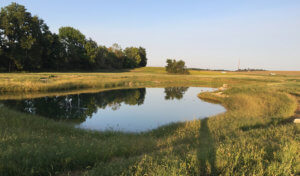
The pond helps sustain the area’s high water quality and is stocked with bluegill, bass, crappie, and other local species.
The final piece of this project involved the construction of the first fishable pond owned by Linn County. The pre-existing site for the pond consisted of a bermed-up area that was weedy, non-functional, and underutilized as a Wanatee Park attraction.
Specific elements were incorporated into the pond’s design to promote water quality and meet project goals, including a sediment forebay, shallow slopes, an impermeable clay base layer, and seepage mitigation measures such as drainage diaphragms. These features, along with native plantings and a recently added prairie buffer, help filter pollutants off the adjacent highway and farm fields and protect the pond as water enters. With a healthy pond system established, our environmental team equipped the pond with various items to enhance fish habitat, including spawning beds, jetties, and assorted depth pools.
The pond also included an Agri Drain Water Level Control Structure™, a CMP riser outfall, and an emergency spillway. Our experts determined this was the best fit for the area as it enables staff to control water depths and maintain fishing structures. These additions, along with shallow slopes near the interior perimeter, increase safety for recreational users. County crews are responsible for continual maintenance and routinely mow a trail around the pond for improved access. After construction was completed, the pond was filled and stocked with bluegill, bass, crappie, and other local fish species.
Collaboration & Communication Leads to Project Success
The success of these projects involved significant collaboration between the Snyder & Associates project team and Linn County Conservation officials. Our experts helped with the technical aspects while the client attended site visits, discussed site conditions, and helped determine where the various project features would be placed. Between their vision and our expert designs, Wanatee Park continues to experience improved water quality and is viewed as a blueprint for future collaborative efforts.
